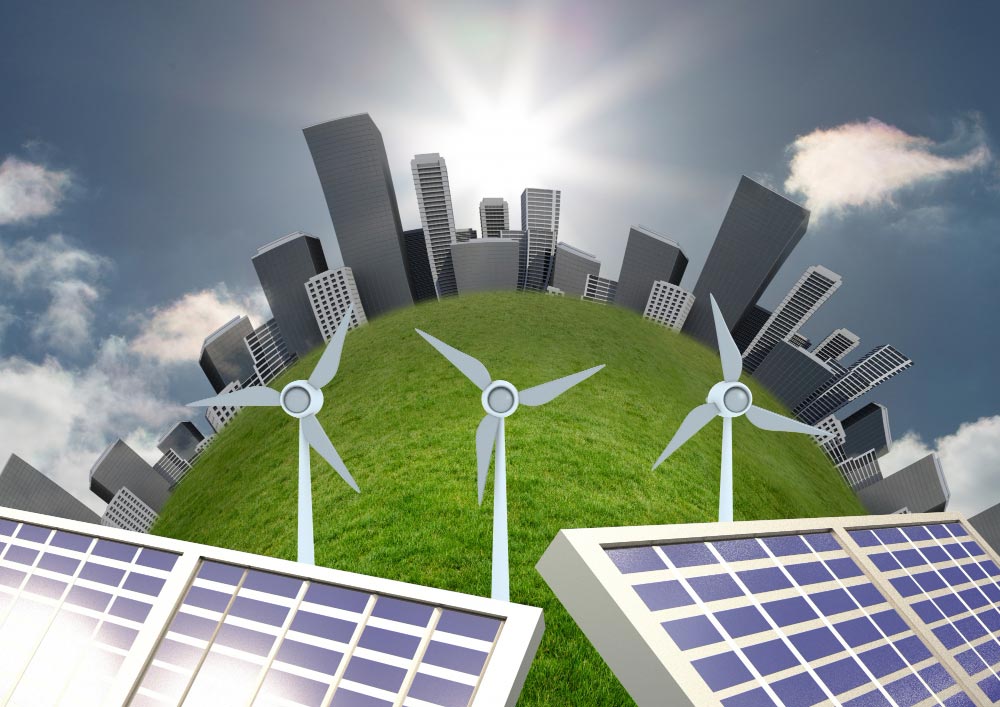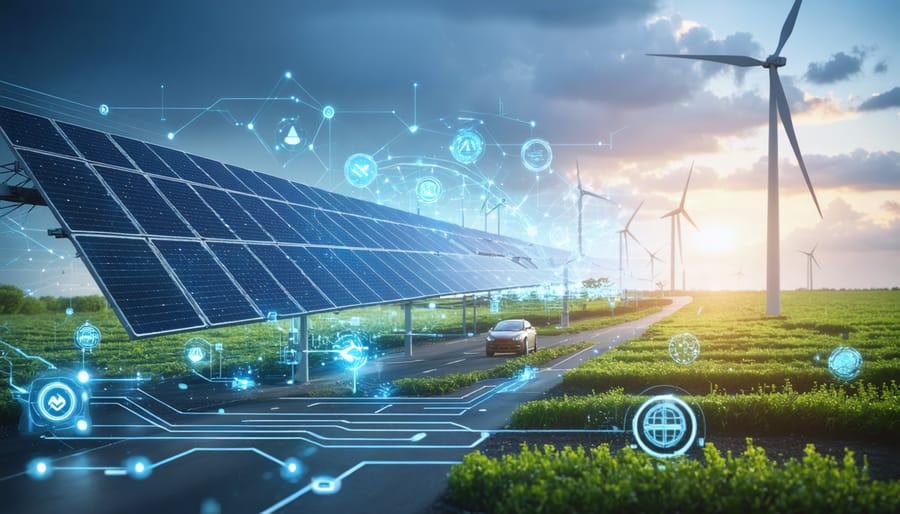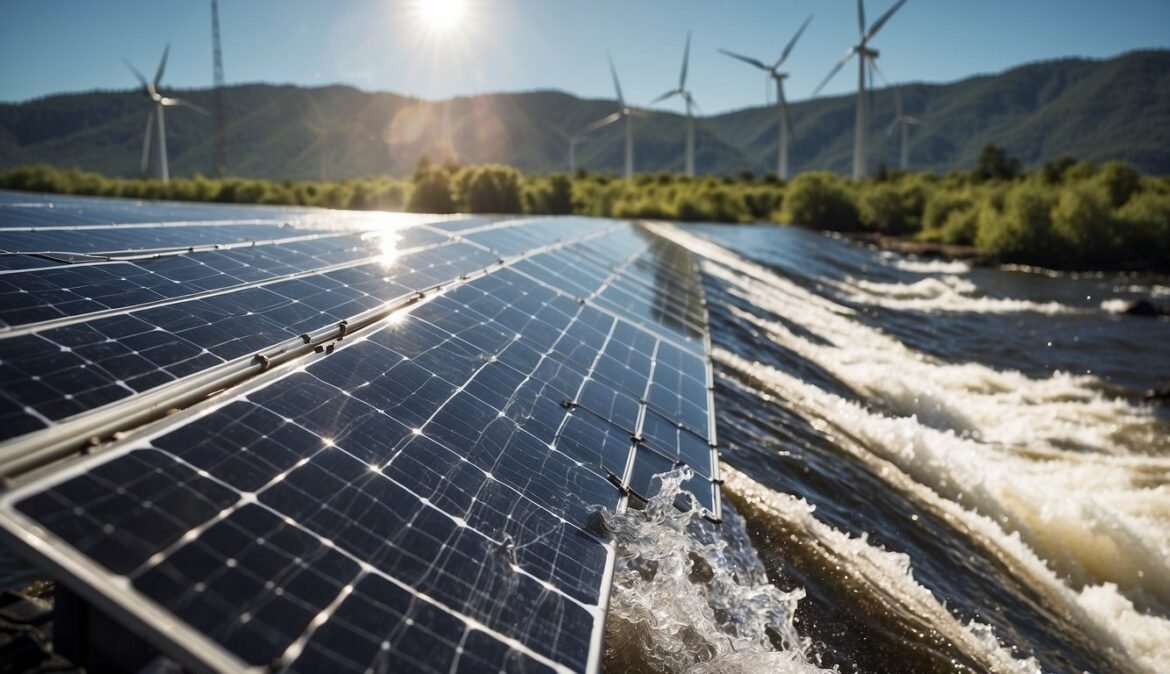
Introduction
Overview of Renewable Energy
Renewable energy refers to power generated from naturally replenished sources, such as sunlight, wind, and water. These energy sources are more than just alternatives to fossil fuels; they represent a way to address climate change, reduce pollution, and foster energy independence. From solar panels that harness sunlight to wind turbines that transform air currents into electricity, renewable energy technology has come a long way in recent years.
Importance of Advancements in Renewable Technology
The ongoing advancements in renewable technology are vital in making clean energy more efficient, accessible, and affordable. Consider this:
- Cost Reduction: Technological improvements have significantly lowered costs, making solar and wind energy competitive with traditional sources.
- Efficiency Gains: Enhanced efficiency in solar panels and wind turbines means more energy output for less resource input.
- Sustainability: Innovative practices are paving the way for sustainable energy solutions that can meet the demands of growing populations.
At TECHFACK, we believe it’s crucial to stay informed about these trends, as they will shape our future and the health of our planet.

Solar Energy Innovations
Solar Panels Efficiency Enhancements
As we dive deeper into renewable energy advancements, solar energy truly stands out. Recent innovations have led to monumental enhancements in solar panel efficiency. For instance, researchers have developed bifacial solar panels, which capture sunlight on both sides, increasing energy output by up to 30%. Imagine having solar panels that not only soak in direct sunlight but also utilize reflected light!
- Materials Matter: The shift to materials like perovskite has allowed for increased efficiency ratings, sometimes exceeding 25%.
- Durability: New coatings and designs are making panels more resistant to environmental damage, extending their lifespans.
Solar Battery Storage Solutions
But what about storing this energy? Here lies one of the game-changers in solar technology—battery storage solutions. Systems like Tesla’s Powerwall are enabling homeowners to store energy generated during the day for use at night.
- Key Benefits:
- Increased energy independence.
- Reliability during power outages.
- Maximum use of renewable energy.
At TECHFACK, we’re excited to see how these innovations will empower both individuals and communities toward a greener future.

Wind Power Developments
Next-Gen Wind Turbines
Shifting gears to wind power, the sector has seen groundbreaking developments in wind turbine technology. Next-gen wind turbines are sleek, taller, and incredibly more efficient than their predecessors. A personal experience at a recent renewable energy expo showcased these marvels—imagine turbines that can harness wind at lower speeds, thanks to larger blades and innovative rotor designs!
- Key Features:
- Increased Capacity: New models can generate upwards of 10 MW of power.
- Adaptive Controls: They adjust to wind conditions in real-time, maximizing energy yield.
Offshore Wind Farms Expansion
The expansion of offshore wind farms is another exciting development. These farms take advantage of high wind speeds found over oceans, leading to higher energy output.
- Benefits:
- Minimal visual and noise impact on communities.
- Potential to house larger turbines due to deep waters.
Countries like the UK and the US are investing heavily in this domain, aiming to create sustainable energy hubs. At TECHFACK, we’re eager to witness how these advancements reshape the future of energy generation!

Hydroelectric Improvements
Hydroelectric Upgrades for Sustainability
Moving from the winds to the waters, hydroelectric power remains a cornerstone of renewable energy. Recent hydroelectric upgrades focus on enhancing sustainability and minimizing environmental impacts. It’s fascinating to see how modern technology transforms traditional practices; for instance, new fish-friendly turbines are helping to maintain aquatic life while generating electricity.
- Sustainability Features:
- Reduced Reservoir Emissions: Innovative designs are preventing methane emissions from decaying organic matter in reservoirs.
- Improved Water Management: Smart systems are monitoring water flow to optimize energy production without harming ecosystems.
Innovations in Small-Scale Hydropower
In addition to large dams, small-scale hydropower solutions are gaining traction. These systems can harness energy from smaller streams and rivers, making them ideal for rural and remote areas.
- Advantages:
- Community Empowerment: Localized energy generation aligns with the “going green” movement, allowing communities to control their energy sources.
- Low Environmental Impact: Small installations typically require less infrastructure and have a minimal ecological footprint.
At TECHFACK, we’re excited about the potential of these improvements to enhance energy diversity and resilience worldwide!

Geothermal Technology Progress
Geothermal Energy Extraction Methods
Continuing our journey through renewable innovations, geothermal energy extraction is making waves with new methods that tap into the earth’s internal heat efficiently. It’s intriguing to think about how deep beneath our feet lies a vast reservoir of energy just waiting to be harnessed! Recent advancements like Enhanced Geothermal Systems (EGS) are revolutionizing this field, allowing access to geothermal resources in areas once thought unviable.
- Key Techniques:
- Hydraulic Fracturing: This method enhances permeability in hot rock formations, maximizing heat extraction.
- Doublet Systems: Utilizing one well for extraction and another for reinjection helps maintain resource sustainability.
Geothermal Heat Pump Innovations
On the other side of the spectrum, geothermal heat pumps are a game changer for residential heating and cooling. I’ve spoken with homeowners who’ve installed these systems, and their satisfaction is palpable—lower energy bills and increased comfort!
- Benefits:
- Energy Efficiency: These pumps can reduce energy consumption by up to 50% compared to traditional systems.
- Environmental Impact: Minimal carbon footprint while providing a consistent temperature year-round.
At TECHFACK, we’re thrilled to explore how these geothermal innovations contribute to a sustainable energy future!

Biomass and Bioenergy Advancements
Biofuels Production Breakthroughs
Transitioning from geothermal energy, let’s shine a light on the exciting world of biomass and bioenergy advancements. Recent breakthroughs in biofuels production are setting the stage for a cleaner, more sustainable fuel future. For instance, I recently had a conversation with a farmer who is now converting agricultural waste into biofuels, which not only reduces waste but also provides a new income stream!
- Key Innovations:
- Second-Generation Biofuels: These are derived from non-food crops, significantly decreasing competition with food supply.
- Algal Biofuels: Utilizing algae for biofuel production is gaining traction due to its fast growth rates and high oil content.
Biogas Utilization Innovations
Alongside biofuels, innovations in biogas utilization are transforming waste into a valuable energy source. Homeowners and businesses are increasingly adopting anaerobic digesters, which convert organic waste into biogas that can be used for heating and electricity.
- Advantages:
- Waste Management: Efficiently reduces landfill waste while producing renewable energy.
- Energy Independence: Communities can become less reliant on fossil fuels.
At TECHFACK, we’re enthusiastic about how these advancements in biomass and bioenergy are not only promoting sustainability but also stimulating local economies!

Energy Storage Solutions
Advancements in Battery Technologies
After exploring the promising avenues in biomass and bioenergy, let’s turn our attention to energy storage solutions—an essential component of a sustainable energy future. Recent advancements in battery technologies are paving the way for more efficient and longer-lasting energy storage. For instance, I talked to a tech enthusiast who recently converted his home to solar energy. He’s thrilled about the enhanced lithium-ion batteries that offer extended lifespan and improved performance!
- Key Developments:
- Solid-State Batteries: These batteries promise higher energy densities and improved safety over conventional lithium-ion batteries.
- Recycling Initiatives: Innovative approaches to recycle old batteries are minimizing waste and recovering valuable materials.
Grid-Scale Energy Storage Innovations
On a larger scale, grid-scale energy storage is transforming how we manage renewable energy. This tech innovation allows utility providers to store excess energy produced during peak generation times for later use.
- Benefits:
- Stability: Balanced supply and demand lead to a more stable grid.
- Renewable Integration: Facilitates higher reliance on renewable sources by mitigating intermittency issues.
At TECHFACK, we’re optimistic that these advancements will play a crucial role in ensuring a reliable and sustainable energy landscape!

Smart Grid and IoT Integration
Smart Grid Technology Applications
As we transition from energy storage to the innovative realm of smart grids, it’s fascinating to discover how technology is reshaping energy distribution. Smart grid technology applications are enabling more efficient energy management. I recall visiting a neighborhood that recently upgraded to smart meters; residents reported lower energy bills and more control over their energy consumption!
- Key Features:
- Real-Time Monitoring: Utilities can track energy usage patterns, leading to better demand management.
- Automated Outage Response: Quick identification of outages allows for faster repairs and improved service reliability.
Internet of Things in Energy Management
Integrating the Internet of Things (IoT) into energy management takes this to new heights. Smart appliances and devices are now capable of communicating with the grid, optimizing energy use on demand.
- Advantages:
- Smart Home Technologies: Homeowners can manage energy use remotely, reducing waste and costs.
- Predictive Analytics: Data collected from connected devices enables predictive maintenance of infrastructure, preventing failures before they occur.
At TECHFACK, we’re excited about how smart grid and IoT integration is revolutionizing energy efficiency, paving the way for a more sustainable and responsive energy landscape!

Future Trends and Outlook
Emerging Technologies in Renewable Energy
As we wrap up our exploration of energy innovations, it’s exciting to look ahead at future trends and emerging technologies in renewable energy. Just recently, I attended a conference where industry leaders discussed breakthroughs in hydrogen fuel cells and wave energy conversion, demonstrating that the renewable landscape is constantly evolving!
- Key Innovations:
- Hydrogen Technologies: Green hydrogen production is gaining attention as it offers a clean fuel alternative for various sectors.
- Biosolar Cells: Combining biology with solar technology, these cells have the potential to create more efficient energy solutions.
Sustainability and Environmental Impact Considerations
While these advancements are promising, it’s crucial to consider their sustainability and environmental impact. We must ensure that our pursuit of new technologies does not compromise our ecosystems.
- Sustainable Practices:
- Life Cycle Assessments: Evaluating the entire life cycle of energy technologies helps in identifying areas for improvement.
- Circular Economy Models: Implementing recycling and reuse strategies can minimize waste and resource consumption.
At TECHFACK, we’re committed to sharing insights on how these trends can lead us toward a greener, more sustainable future!

